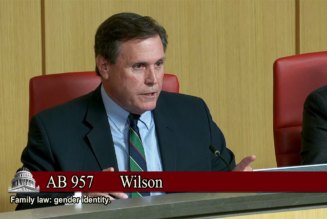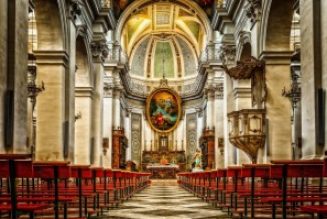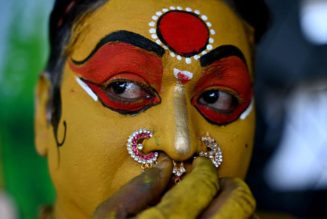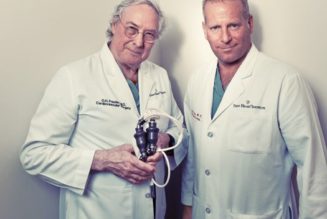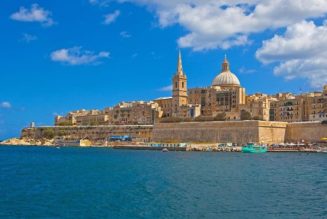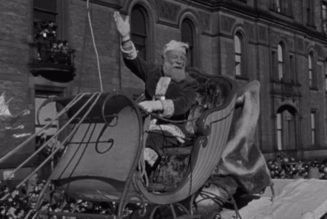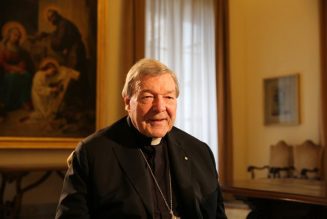Nestled in West Virginia’s Shenandoah Valley, the town of Middleway boasts a ghost story that rivals the most famous haunted tales. What makes this haunting stand out is that it is a Catholic story—a tale of sacraments denied, vengeful spirits, a saintly Catholic priest, and the power of the Holy Sacrifice of the Mass. And the story of the “Wizard Clip” is not just a legend, for the evidence supporting its veracity led Cardinal Gibbons’ own private secretary, then the editor of the Catholic Review, to proclaim it the “truest ghost story ever told.”
Our story begins in 1794, when a stranger knocked on the farmhouse door of Mr. Adam Livingston, a Lutheran farmer, and asked for shelter. Late that night, the man took ill and begged for a priest. Livingston, deeply prejudiced against “papists,” declined the request, and the man died without the Last Rites and was buried in unconsecrated ground.
What followed next was attested to by dozens of Livingston’s neighbors, who kept physical records for the rest of their lives. The Livingston family was tormented night and day by horrifying sounds in the house as well as the frequent flinging of rocks and breaking of dishes and furniture. Their beds regularly caught fire in daytime. But what gives this haunting its unique name is the fact that invisible hands would regularly clip crescent-shaped holes into their clothes, saddles, and shoes. The clippings were small and regular. They looked as if they were done by machine, though those in the house could watch the clipping happen.
Fr. Demetrius Augustine Gallitzin, the “Apostle to the Alleghenies,” offered a firsthand account of the Wizard Clip. Fr. Gallitzin was no country bumpkin or easily impressed naïf: once he had been Prince Demetrius, a Russian aristocrat whose pedigree rivaled that of the Czar. His father, the Russian ambassador to Holland, was the close friend of Enlightenment thinkers Diderot and Voltaire. Prince Demetrius had future kings as playmates, and his tutors were elite European intellectuals.
But at age seventeen, Demetrius rejected rationalist atheism and embraced his mother’s Catholicism, taking the confirmation name of Augustine. Sent by his parents to travel the world as a prince, Demetrius horrified his father by obtaining permission from Bishop John Carroll to enter the new St. Mary’s Seminary in Baltimore.
By the time of the Wizard Clip, Fr. Gallitzin was serving as a missionary priest in Loretto, Pennsylvania, bringing with him his former tutor, Fr. Brosius, an accomplished scientist. Hearing of the haunting, Gallitzin traveled to Middleway to investigate. In a letter he wrote years later, Gallitzin noted, “I could not prevail upon myself to believe [the stories]; but I was soon converted to a full belief in them. No lawyer in a court of justice did ever examine or cross examine witnesses more strictly than I did all those I could procure.”
Writing a version of the story in his book A Letter to a Protestant Friend on the Holy Scriptures, Fr. Gallitzin recounted what happened next. At his wits’ end, Livingston sought divine aid:
The good old man reading in his Bible that Christ had given to his ministers power over evil spirits…with tears in his eyes, related to his minister the history of his distress, losses, and sufferings, [and] begged him to come to his house, and to exercise in his favor the power he had received from Jesus Christ. The parson candidly confessed that he had no such power. The good old man insisted that he must have that power, for he found it in his Bible. The parson replied that that power existed only in old times but was done away now.
Undeterred, Livingston searched for someone who did have such power. After many ministers failed to relieve him, he even turned to conjurors and those who claimed power over the devil. All failed. In despair, he determined that “Christ had no longer any true ministers on earth and those who pretended to be such were a set of imposters.”
It was then that Livingston received a dream. In it, he found himself toiling up a steep mountain. At the top, there was a magnificent church, and, standing in front of it, was a minister in strange robes. A voice spoke to him: “This is the man who will relieve you.”
An Italian neighbor, upon hearing the dream, told Livingston that only priests wore such robes. Livingston thus presented himself at Fr. Denis Cahill’s Mass, held in a nearby farmhouse. As the priest approached the altar, Livingston broke down weeping, recognizing the man from his dream. But when he begged the priest to come and exorcise the spirit from his home, Fr. Cahill laughed and said that it must be a neighbor playing tricks on him. However, he finally agreed to come and sprinkle Holy Water around the farmhouse.
Dozens of neighbors attested that, when Fr. Cahill was leaving the house, an invisible hand placed at his feet a purse of money that had gone missing from a locked drawer weeks before. For a time, the hauntings ceased. But then they returned with a vengeance. When Livingston begged Fr. Cahill to return, the Irishman wrote to Fr. Gallitzin to ask him to accompany him. The priests came and said Mass in Livingston’s home, praying for the soul of the departed stranger who had been denied the Last Rites. All destruction ceased from that point on.
But that is not the end of the story. Father Joseph Finotti assembled every witness account he could find in a book entitled The Wizard Clip in 1878, including testimony from neighbors and family members who had been children during the occurrences or who had heard the story from their parents. All attested to the fact that while the tormented haunting had ceased, it was replaced by the Voice—a beautiful voice that spoke to the family and certain neighbors for over seventeen years. The Voice, often accompanied by blinding, heavenly lights, instructed the Livingstons in the Catholic Faith and led them in daily Rosaries for the souls in Purgatory, waking them three times each night for prayer. The Jesuit brother Joseph Mobberly, writing an account in the 1820s, believed that Livingston had been examined by no less than Bishop Carroll himself, who was amazed at the knowledge this barely literate farmer had of the Faith.
There were physical manifestations from the Voice as well. For instance, at one point, a daughter was grumpily wondering why she had to pray for the souls in Purgatory because, she decided, it must not be too bad to be in Purgatory. Suddenly, a nearby towel bore a burnt but perfectly outlined handprint, the fabric in between each finger intact. The Voice told her that this was how the souls in Purgatory suffered. At another point, Livingston was out plowing when the Voice let him hear the wailing of the suffering souls longing for Heaven.
Livingston moved his family to Loretto to become Fr. Gallitzin’s parishioners, and he donated the Middleway farm to the use of the Church. The Voice had foretold that “before the end of time, that would be a great place for Prayer and Fasting.” For almost two centuries, it stood fallow, known as the “priest’s field,” until the diocese built a retreat center on the spot.
Continuing his account of the Wizard Clip in his letter to his protestant friend, Fr. Gallitzin commented that,
your minister would laugh very heartily if you should relate to him the above facts; for with the wise men of this enlightened age, he has peremptorily decided that miracles, etc., etc., are no longer necessary, and of course have ceased,—since when I did not learn; nor did I ever find any passage in Scripture which authorizes the belief that miracles should ever cease altogether, or that Evil Spirits should never have it any more in their power to molest the bodies, and the property of men, as they used to do during the lifetime of our Saviour, and after His Resurrection.
And what became of Fr. Gallitzin? This saintly priest wore himself out in the service of the Alleghenies and left behind a strong community of Catholics all throughout western Pennsylvania. He died May 6, 1840, and was buried in Loretto, Pennsylvania, where a basilica now stands over his grave. In 2005, Pope Benedict XVI bestowed upon him the title “Servant of God.”
[Image Credit: Unsplash]
Join Our Telegram Group : Salvation & Prosperity


